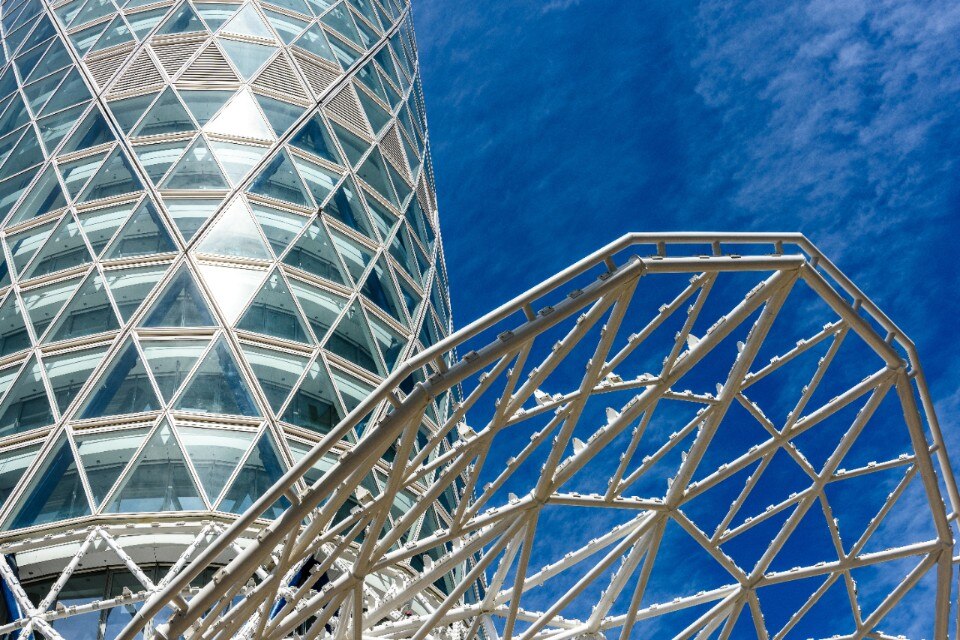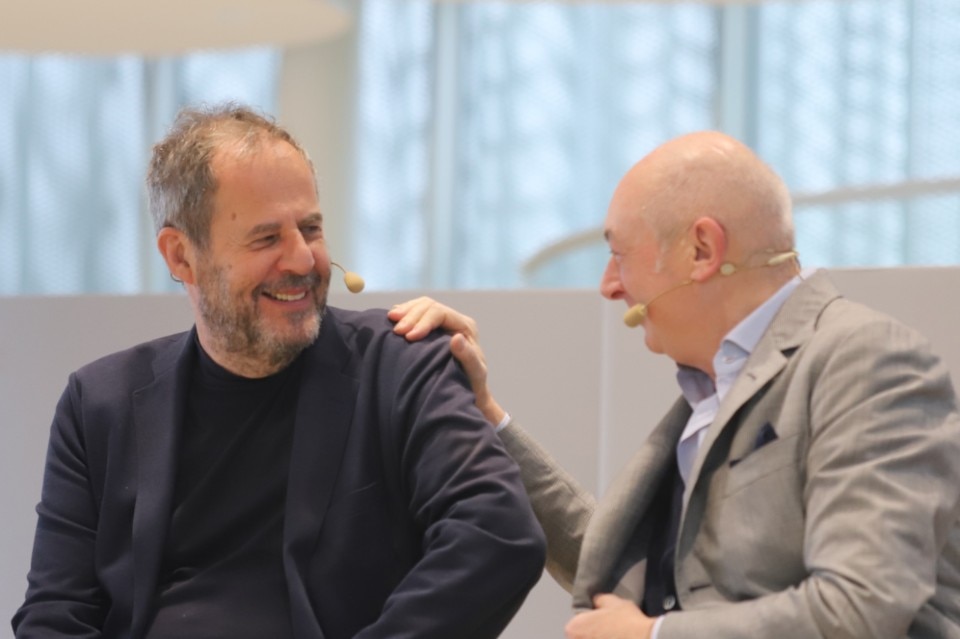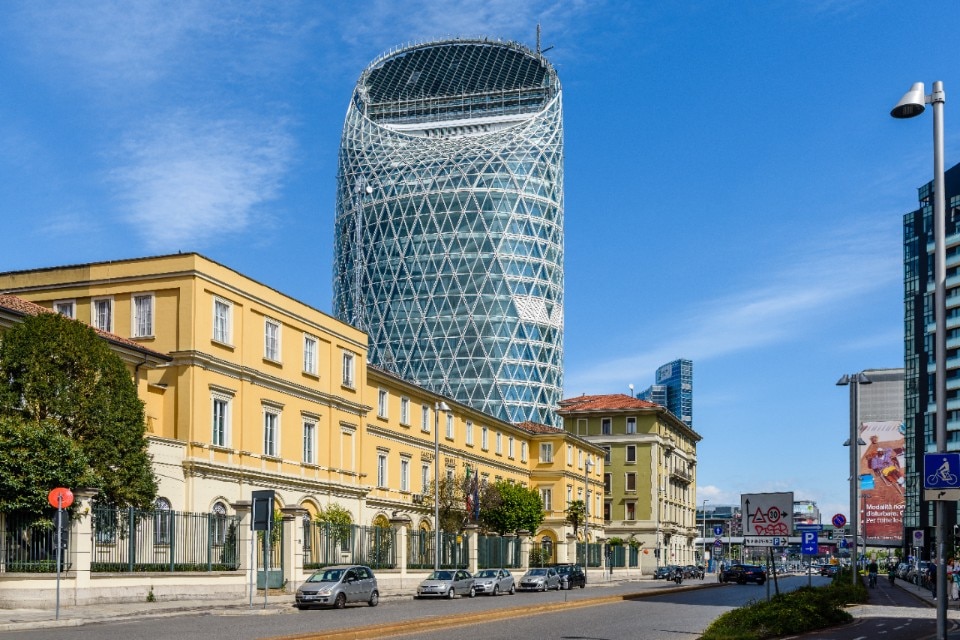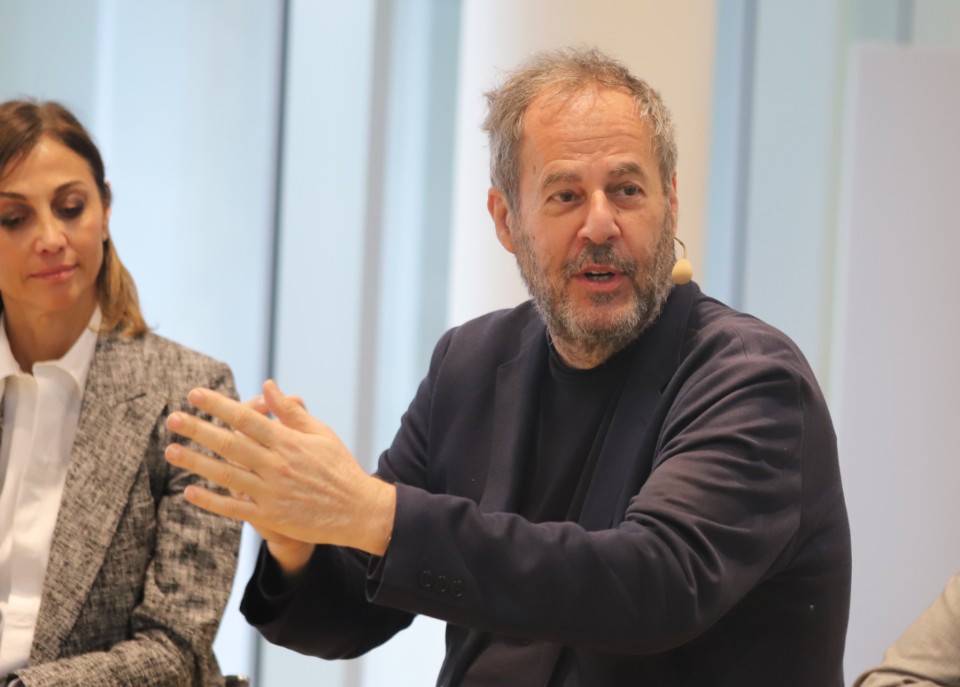Involved with his firm in several projects of real public and media relevance, Mario Cucinella is also in the spotlight for a Milanese story. His Unipol Tower is the latest guest that is unaccounted for in Piazza Gae Aulenti – along with Pelli’s UniCredit Tower, De Lucchi’s Pavilion, the Biblioteca degli Alberi, and the Porta Nuova urban villas. The inauguration of the Tower will mark the end of a megaproject that has become the image – not even too metaphorically – of that “Milan model” generating so much attraction, investment, and criticism in recent years.
However, what role and position does this building have regarding the city, and more importantly: what city will it be interacting with?
It is strange to witness that policies creating wealth actually create exclusion, it almost sounds like a verbal paradox. A wealthy city as Milan, which has been enriched by major public interest investments has failed to generate inclusiveness.
Mario Cucinella

Mario Cucinella answers these questions for Domus as a guest at the breakfast events hosted by the magazine at the new Bocconi University Campus designed by SANAA. While involved in a collective deconstruction of the concept of sustainability, he confirms that Unipol Tower is scheduled to open after the summer – once finishes and testing are completed – and with it the final welding between the city and the Gae Aulenti quadrant will be completed. “For now, it is the only building that has two entrances,” he tells us. “The first one is at the podium level but the second generates a small square at street level, a public space, and this is crucial since Piazza Gae Aulenti is separated by a slope on each side from the city level.
It is a building that fits into a system of already finished building blocks, and looking toward the southwest it tries to be a small climate machine: there is a big atrium working as a climate moderator, and a greenhouse with a 60 degrees pitch, due to urban planning regulations, which has ultimately created an interesting aesthetic result, a big eye with an elliptical section. With this building, we also wanted to tell the story of the figure of this net (the external structure, Ed) that stretches and shrinks under parametric control: in fact, it is perhaps one of the projects where the digital component was the most powerful, both in design and in production.”

Among the endorphins and adrenaline rush of the city, this building will surely become a symbol, and this role is far from easy. “Among all this happiness, all this cheerfulness, all this creativity, there is a part of the city that is struggling more and more. Milan will reach maturity when it will be able to balance all the different needs running through it. The city is an ecosystem: if you move too much in one direction, you risk creating a city that we already know about. A city that loses in inclusiveness, made for only one part of the population – now the far south of Brooklyn has become the only place in New York where you can afford living, even Harlem and South Bronx are gentrified – you risk losing this very creativity. In fact, creativity is a mechanism that is powered by a whole range of very different figures: we need politicians to understand that it is necessary to curb an overly speculative wave to ensure a social balance. It is strange to witness that policies creating wealth actually create exclusion, it almost sounds like a verbal paradox. A wealthy city as Milan, which has been enriched by major public interest investments has failed to generate inclusiveness. We grow a system that is increasingly hungry for wealth and forgets a part of society.”
However, it is difficult to see if, with any intellectual honesty, there is any room left for designers to act. “In my opinion some room for action does exist” Cucinella says instead. “However, architects should stop thinking they can just create expensive things. I am very passionate about low-cost architecture because that is where we can give the best of our work: with our skills and with a careful study of processes we can realize affordable, less expensive buildings finding their own beauty in simplicity”. A possibility that, however, conflicts with a system of communication and marketing that results excluding, as long as it includes only the exceptional. “It is a mechanism that works fine for a while, but then in the long run you cannot think that everything is based on the exclusivity of things only, always on something different, always on something more complex. Slowly that culture takes hold and a whole part of architectural practice, involved in less glamorous projects, is left out: to me, it seems like a perverse mechanism rather than an evolution.”

The question about the sense of private sector engagement in supporting this process is now almost a habit, not even a question anymore, “but you can’t always ask the private sector to make a social effort,” the architect answers back. “The problem is that the public sector has given up on this role, and that’s what I regret: why have you given up on being bearers of a message? If they, who control the city and the rules, don’t do it, you can’t expect the private sector to do social housing. Of course, attempts are being made in that direction now, but the risk is an even worse backlash, as this all happens in a context of quid pro quo; it would make sense if the public sector took the lead. It is a time when we should be thinking about Milan in this kind of direction: fine for wealth, fine for design, fine for happiness, fine for this very intense and unique Design Week, but let us not forget also a more careful policy on a medium to long horizon.
To say, even London – a very expensive city – has post-war housing on the Thames that nobody touches or questions, New York has Projects in the middle of the city: these are social policies that have never succumbed to speculation.
“It gives the idea that real resilience lies there as well, more like real resistance, guaranteeing the social mix that is vital for cities.
Even Bologna, when it made urban planning policies in the 70s whereby 30 percent of private development was to be devoted to social housing, has built such mix. In Vienna it was the same, with social housing in the heart of the city: the mix also allows social peace to be maintained within the urban context, it reduces frictions. In France, where different policies have been implemented, we saw what happened: history is a teaching”.
Opening image: Mario Cucinella, domusbreakfast, Milano Design Week 2023. Photo by Valentina Petrucci


